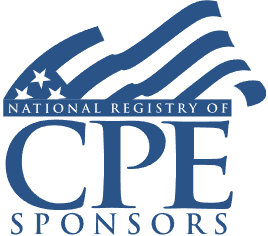Drafting IRA Beneficiary "See-Through" Trust Provisions
Meeting Complex IRS Rules to Qualify a Trust as a Conduit Trust or an Accumulation Trust

Course Details
- smart_display Format
Live Online with Live Q&A
- signal_cellular_alt Difficulty Level
Intermediate
- work Practice Area
Estate Planning
- event Date
Wednesday, June 4, 2025
- schedule Time
1:00 p.m. ET./10:00 a.m. PT
- timer Program Length
90 minutes
-
This 90-minute webinar is eligible in most states for 1.5 CLE credits.
-
BARBRI is a NASBA CPE sponsor and this 110-minute webinar is accredited for 2.0 CPE credits.
This CLE/CPE course will provide estate planning counsel with detailed guidance on drafting "see-through" trusts that qualify as IRA beneficiaries under IRS regulations. The panel will explain provisions governing both "conduit trusts" and "accumulation trusts" and offer sample language for both trusts that will meet IRS standards.
Faculty

Mr. Shoff compassionately assists clients facing the inevitable challenges of aging, sickness, and death by counseling clients on how to put the best estate plan in place for their needs. This involves guidance on what form of an estate plan is most appropriate, whom to appoint as fiduciary of that plan (Power of Attorney Agent, Trustee, Executor), and what kind of property beneficiaries (children, grandchildren, charities, etc.) should receive after a person’s death. Over a decade in practice, he has assisted many individuals and families with planning for their incapacity and death through the effective drafting of Health Care Proxies, Living Wills, Last Wills, Powers of Attorney, Revocable and Irrevocable Trusts. As part of planning for the elderly and disabled individuals, he also counsels clients on public benefits that may be available to help pay for a client’s long-term care. This often involves navigating the complex rules and regulations of the Medicaid program in New York to preserve clients’ assets as much as possible while still obtaining the Medicaid coverage needed to pay for their long-term medical needs
Description
A valuable tool for protecting IRA assets as a component of estate planning is using a trust as an IRA beneficiary. These "see-through" trusts can provide useful flexibility in a comprehensive estate plan and carry income tax consequences and stringent IRS requirements for qualification. Estate planning counsel must know the detailed IRS rules in drafting these "see-through" trusts to meet Required Minimum Distribution (RMD) and income accumulation requirements.
IRA beneficiary trusts generally come in two types: "conduit trusts" and "accumulation trusts." Compliance with specific requirements enable conduit trusts to calculate and distribute RMDs over the lifetime of eligible designated beneficiaries. Notably, IRA beneficiary trusts of any type must be valid under state law, but should also contain specific language and provisions that qualify the trust for see-through treatment.
Whether estate planning counsel is drafting a trust to function as a conduit or an accumulation trust, practitioners must know the rules and required language to avoid severe tax consequences.
Listen as our experienced panel provides detailed guidance, including sample language, to help you master the intricacies of drafting see-through IRA beneficiary trusts.
Outline
- Trusts as beneficiaries of an IRA
- Conduit vs. accumulation trust
- DNI impact and considerations
- Drafting provisions for conduit trusts
- Drafting provisions for accumulation trusts
Benefits
The panel will review these and other relevant issues:
- Impact of the SECURE Act, SECURE 2.0, and other regulations
- Income tax considerations in utilizing a see-through trust
- What provisions must be included in trust language for a trust to qualify for see-through treatment as either a conduit trust or an accumulation trust?
- Factors to consider when drafting a QTIP trust as an IRA beneficiary trust
NASBA Details
Learning Objectives
After completing this course, you will be able to:
- Understand the IRS rules in drafting "see-through" trust provisions and required language to avoid severe tax consequences
- Recognize key tax issues relating to IRA beneficiary trusts
- Balance critical income tax considerations with other estate planning goals in utilizing see-through trusts
- Field of Study: Taxes
- Level of Knowledge: Intermediate
- Advance Preparation: None
- Teaching Method: Seminar/Lecture
- Delivery Method: Group-Internet (via computer)
- Attendance Monitoring Method: Attendance is monitored electronically via a participant's PIN and through a series of attendance verification prompts displayed throughout the program
- Prerequisite: Three years+ business or public firm experience preparing complex tax forms and schedules, supervising other preparers or accountants. Specific knowledge and understanding of estate, gift and trust taxation including various trusts types, the unified credit, and portability.

Strafford Publications, Inc. is registered with the National Association of State Boards of Accountancy (NASBA) as a sponsor of continuing professional education on the National Registry of CPE Sponsors. State boards of Accountancy have final authority on the acceptance of individual courses for CPE Credits. Complaints regarding registered sponsons may be submitted to NASBA through its website: www.nasbaregistry.org.
Related Courses

Estate Planning for Business Owners: Buy-Sell Agreements, Non-Family Interests, Valuation Considerations, Tax Issues
Wednesday, April 2, 2025
1:00 p.m. ET./10:00 a.m. PT

Mastering Fiduciary Accounting Income for Estate Planners and Administrators
Friday, April 25, 2025
1:00 p.m. ET./10:00 a.m. PT

Avoiding Trust and Estate Probate Challenges: Minimizing and Litigating Claims of Undue Influence, Fraud, Capacity, and Mistakes
Thursday, April 17, 2025
1:00 p.m. ET./10:00 a.m. PT
Recommended Resources
Building Your Book: Strategies to Secure Long-Term Success
- Business & Professional Skills
- Career Advancement
- Talent Development